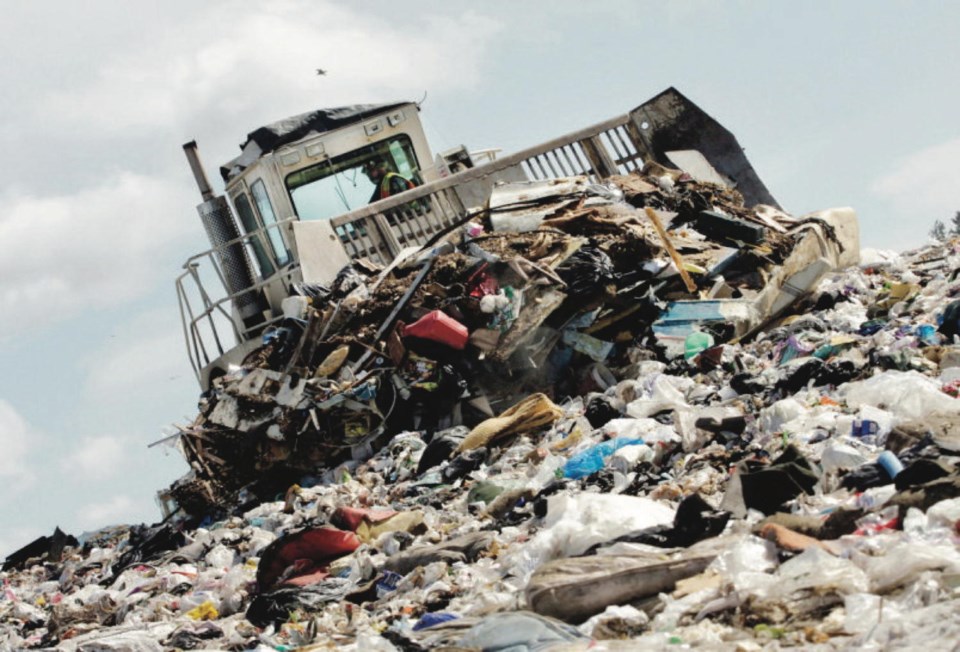Freeze bike lane work until Pandora settled
Victoria council has elevated cycling to the level of godliness and at the same time made no effort to enforce cycling laws.
They have encouraged a significant portion of the cycling population to believe they are above the rules of the road. As a result, the video evidence in the human rights ruling about Pandora Avenue bike lanes and blind pedesterians is a clear byproduct of this action/inaction. As usual, the taxpayer will again lie in the bed they’ve made.
A logical idea, which ensures it won’t happen, would be to freeze the bike lane work on Vancouver and Richardson until the cost of addressing the Pandora issue is determined.
Scott Clark
Victoria
Hartland expansion is the wrong choice
The Capital Regional District is proposing to expand the Hartland landfill to prolong its lifespan. Expanding landfills to dispose of waste is incompatible with the CRD’s “climate emergency” proclamation and does not meet national, provincial and regional greenhouse gas reduction targets.
Expanding Hartland will result in the destruction of 73 acres of forest and an increased production of methane. There are alternative technologies but the CRD is reluctant to consider them seriously because it is wedded to the revenue model of tipping fees.
As Trevor Hancock pointed out recently, the CRD’s own documents indicate a key goal is to ensure the financial sustainability of the waste system by keeping waste and the attendant tipping fees in the region.
When the CRD voted against the recommendation of the citizen advisory board on solid waste to adopt more aggressive waste reduction targets, a key factor was the CRD staff’s view that Hartland could only be operated profitably in a very low waste environment if “flow control” was imposed.
Flow control is a provincial measure requiring all haulers to use a given region’s landfill.
The province opposes imposition of flow control, as it creates a monopoly and increases tipping fees.
Under its current policy, the CRD has no incentive to substantially reduce waste going to the landfill lest it lose tipping fee revenues. The CRD needs to revise its outdated revenue model for waste disposal by looking at waste to energy options.
Hugh Stephens
Mount Work Coalition
Victoria
Many questions about Hartland plan
There are a few questions that can be asked of the Capital Regional District board members that are considering expanding Hartland landfill as citizens begin to shift from a “Waster Society” to a “Sustainable Society.”
How can we transition to a zero-waste society?
What is the plan to encourage all of us to waste not our present 382 kilograms per person per year, but 125 kilograms?
How will Hartland landfill transition in 10 years to a third of the waste now processed?
What are the incremental steps being planned for employees and infrastructure?
How much carbon is released into the atmosphere where all the trees are removed to build the expanded Hartland landfill?
How much carbon is no longer stored in the soil after it is paved or polluted with toxins from the expanded Hartland landfill?
What watershed are being impacted by the Hartland landfill, what species are at risk, how much biodiversity is being lost with the expansion?
What would a circular loop for our waste look like if we treated waste as a resource?
How can the finances being considered for the expansion be used to shift to contraction towards a less “Waster Society”?
How does expanding the Hartland landfill achieve the climate emergency declared by CRD?
Eleanor Calder
Esquimalt
SEND US YOUR LETTERS
• Email letters to: [email protected]
• Mail: Letters to the editor, sa���ʴ�ý, 201-655 Tyee Rd.,
Victoria, sa���ʴ�ý V9A 6X5
• Submissions should be no more than 250 words; subject to editing for length and clarity. Provide your contact information; it will not be published. Avoid sending your letter as an email attachment.



